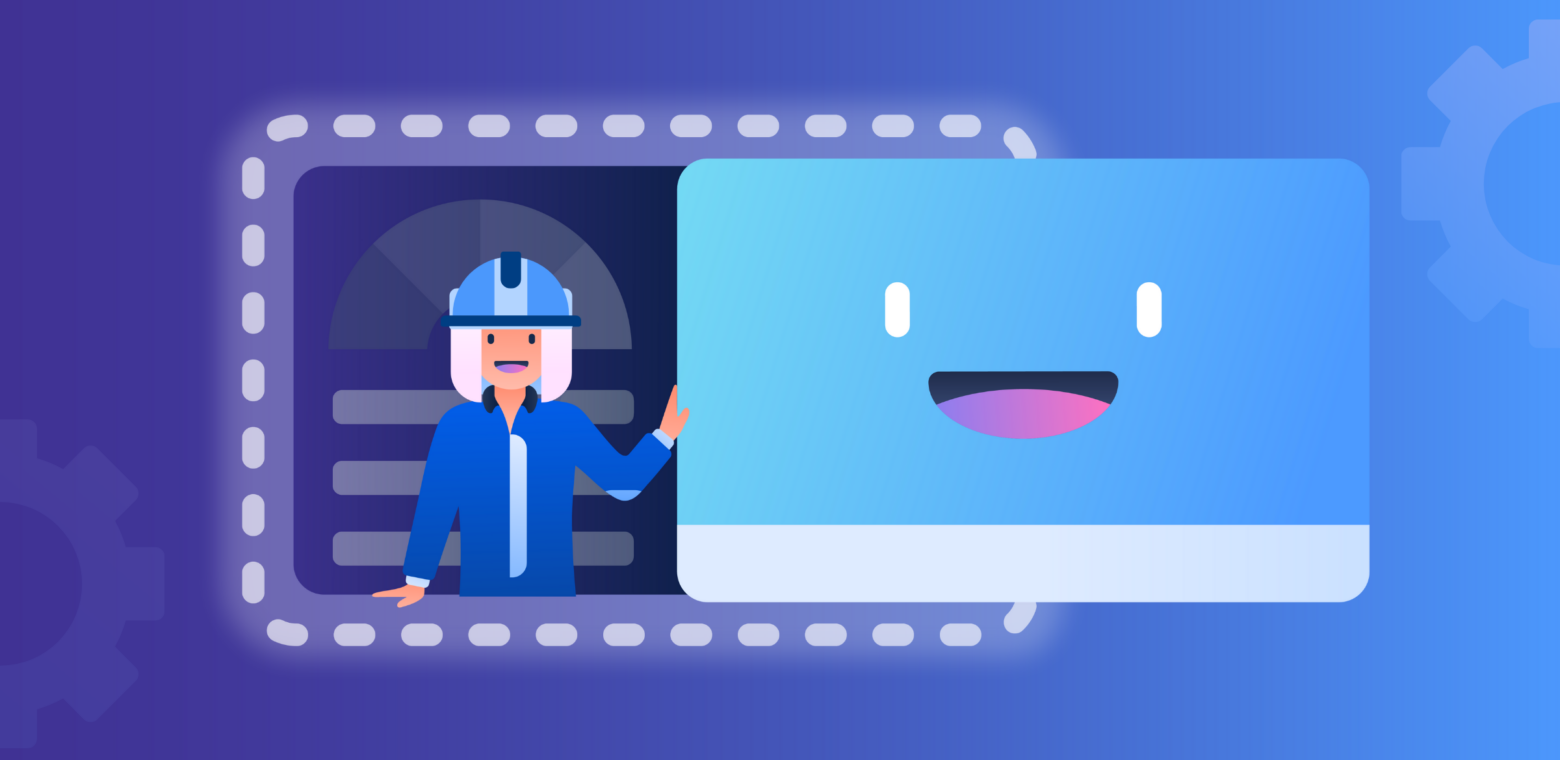Your engineering team is heads-down busy. In order for them to function efficiently and iterate quickly as a team, they need open communication and collaboration, and effective, interconnected tools. The less time spent context-switching between tools, the better.
Plus, engineers often work remotely and are opting for hybrid office models. Sticky notes on whiteboards for sprint retrospectives, product roadmaps, bug fixes, site reliability tracking, and launches don’t work anymore.
5 Must-Have Trello Power-Ups For Engineering Teams
It’s time to meet your engineers where they work best: in the apps they’re already using. Bring the collaboration and communication tools to them—and make their jobs smarter and easier, not harder.
Tl;dr: Here are Trello’s must-have Power-Up app integrations, time-saving plug-and-play templates, and features that every effective engineering team loves.
1. Jira Power-Up For Trello
Tl;dr: Bring Jira issues into your engineering team’s shared workspace to visually track their progress.
Trello’s Jira Power-Up is an app integration that allows you to connect Jira issues, bug fixes, backlogs, and so on to Trello cards. This is essential for visually tracking the status of work items and keeping transparency among team members.
How It Works
Once Jira issues have been connected to Trello cards, they can be labeled, categorized, color-coded, prioritized, assigned to individuals, given deadlines, marked as to-do, in-progress, or complete, and shared in Trello Workspaces among teams.
Teams can add and view important Jira issue information in the details section of each card. This seamless integration allows developers to jump back and forth easily between Jira projects and Trello in order to manage and track an issue’s progress from start to finish.
2. Slack Power-Up For Trello
Tl;dr: Keep communication channels open, no matter where teams are working, with Slack and Trello’s seamless integration.
Slack is an essential tool for open communication and sharing ideas among teams and organizations, especially remote ones. The Slack Power-Up for Trello makes it easy for your engineering team to connect with each other through the apps that they already use and love.
How It Works
Teams can share Trello cards with important tasks or project information directly into Slack channels or messages. Likewise, team members can get automated alerts in Slack for project reminders, upcoming deadlines, or task notes for them in Trello. Attach conversations to Trello cards as quick reminders or references to project discussions that happened in Slack chats.
3. GitLab Power-Up For Trello
Tl;dr: Focus on delivering better software faster, not context-switching between tools.
GitLab was Trello’s most requested third-party Power-Up for good reason. Together with Trello, it’s the complete DevOps platform, designed to help developers streamline their workflows. Reduce context-switching and save time (and brain capacity!) to help your engineering team focus on what they do best: developing.
How It Works
This integration allows you to connect to GitLab from within shared Trello Workspaces and boards and attach or link a merge request right into a Trello card. These cards can then be labeled, assigned, categorized, and tracked among teams. Developers can seamlessly click through the attached merge request within Trello cards.
4. GitHub Power-Up For Trello
Tl;dr: Visualize everything that’s happening in GitHub from one color-coded Trello board.
Keep track of what’s happening in GitHub directly from your Trello shared Workspaces and boards. Trello helps bring a little big-picture perspective into your codebase by connecting pull requests, issues, and branches into color-coded Trello cards.
How It Works
The GitHub Power-Up allows engineering teams to easily access pull requests, commits, branches, and issues by attaching them to Trello cards. These can then be given color-coding and visual badges to clearly mark the status of checks.
At a glance, those cards that haven’t passed their checks and prevent commits with errors from being merged can be identified and assigned. Developers can then jump into GitHub with a single click to work on the task.
3 Easy-To-Use Trello Templates For Agile Engineering Teams
1. Sprint Retrospectives Template
Agile teams are constantly iterating, but they also need to slow down and celebrate what went well, talk about what needs improvement, and list the next steps based on key learnings. It’s one of the key tenets of agile development: to continuously improve your team’s productivity.
With global and remote teams or new hybrid office models giving flexibility to where employees work, in-person sessions and sticky notes don’t always work for sprint retrospectives. Trello’s Sprint Retrospectives template makes sprint retrospectives more efficient and effective, no matter where your developers are.
How It Works
The Sprint Retrospectives template in shared Trello boards helps keep team discussions open, collaborative, and focused on ways to improve. This template has “Went Well”, “Needs to Change”, and “Questions and Discussions” lists within a shared online Workspace. Encourage and empower every team member to share their thoughts and ideas openly. Have them vote and discuss the issues that matter.
Share and keep track of your learnings (and growth!) here.
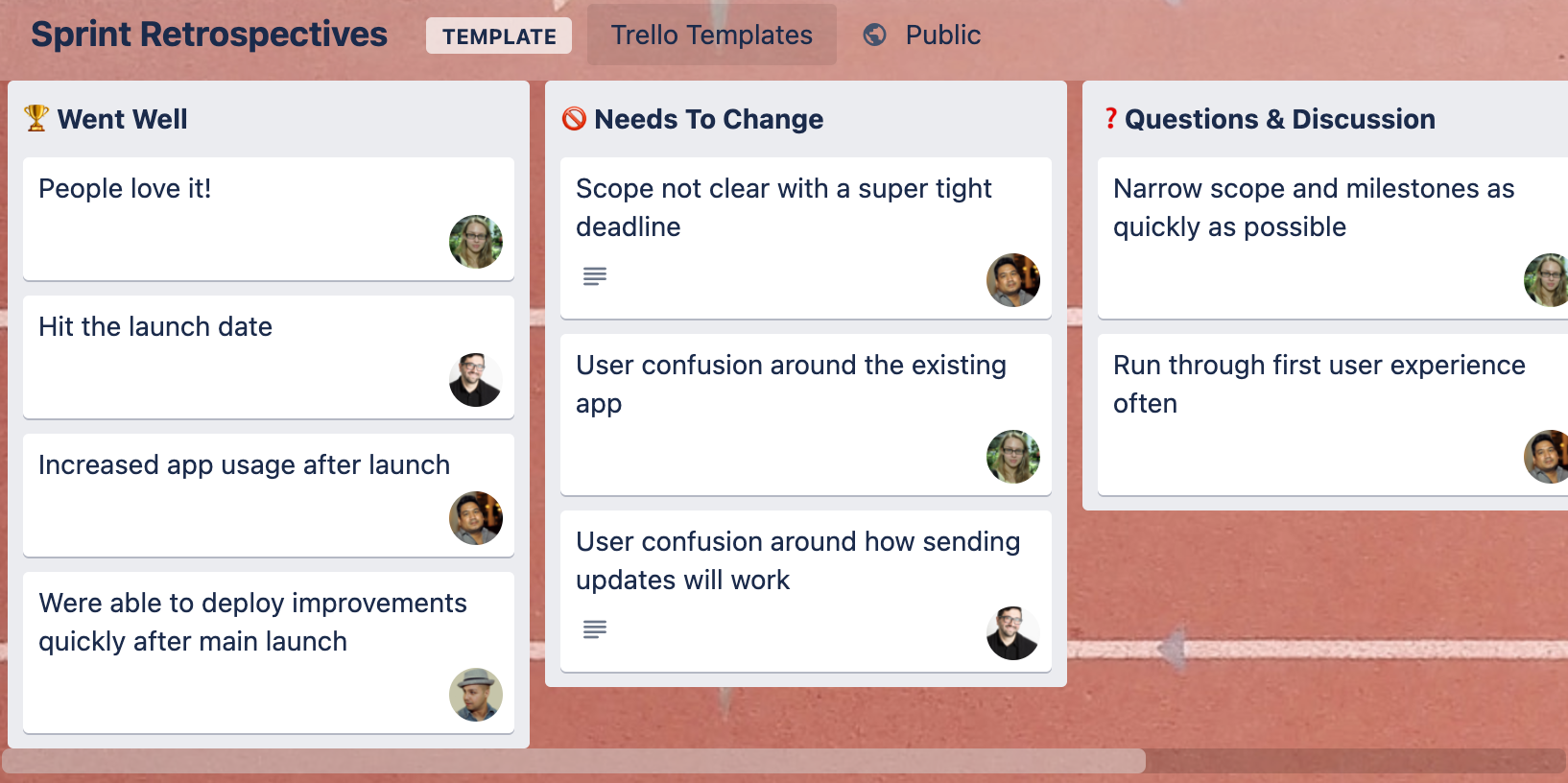
2. Site Reliability Template
Improving your site often gets pushed aside for more “pressing” or time-sensitive tasks. But, it’s an essential project that never fully leaves an engineering team’s to-do list. Keeping sites up and running—and with the times—is a full-time job.
Tracking the constant flow of code, deployments, and tasks needed to scale, improve, or fix sites at any given time is a critical part of project and team management. This can be easily managed with Trello’s Site Reliability Template.
How It Works
Engineering teams use this board among team members to keep track of long- and short-term goals and priorities around maintaining and improving site reliability. There are lists for planning, issues, and requests, next up, doing, in code review, staging, in production, done, and recurring work.
This is a great place to track incoming issues and monitor who’s working on what and when. Quickly see what has been tested, merged, and deployed and easily delegate tasks from one place.
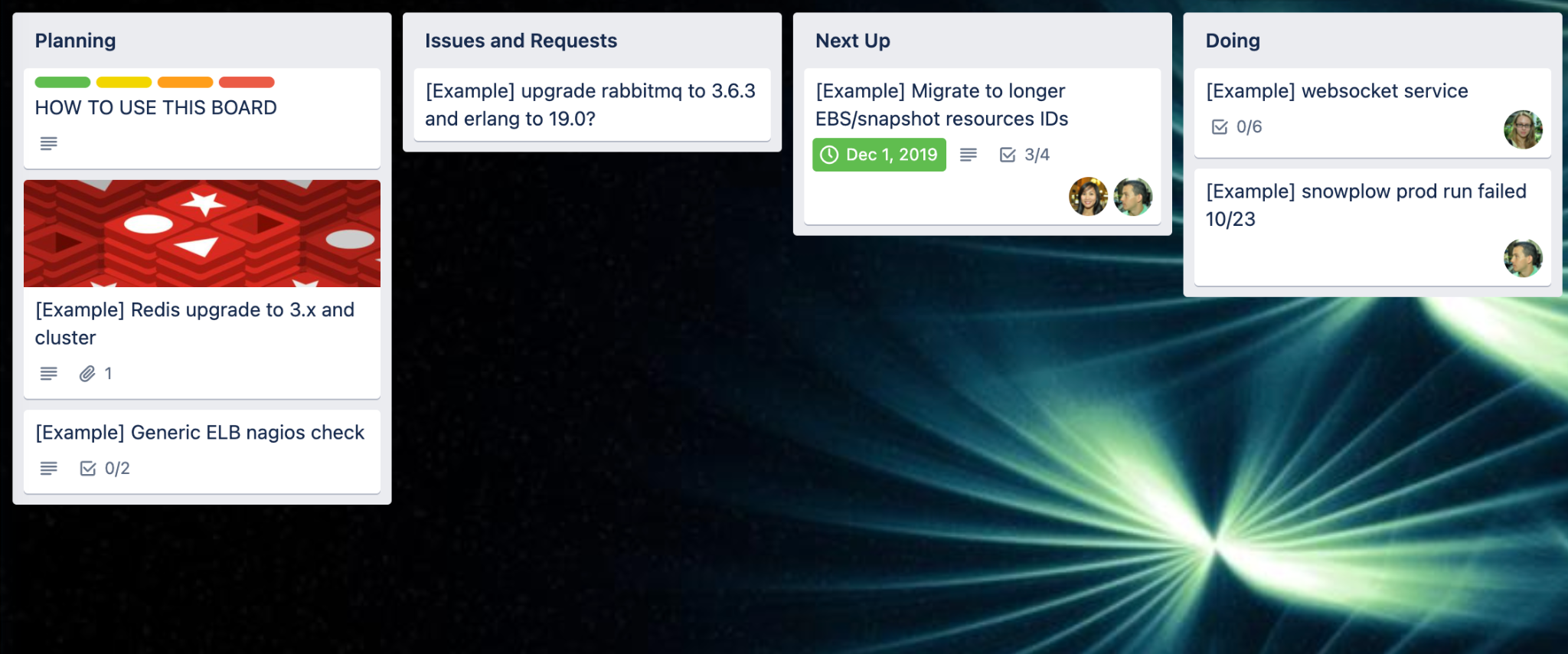
3. Software Development Template
Consider this your go-to template for all things related to software development projects. This is a great one-stop-shop for teams to stay organized around tasks and deadlines for backlogs, sprint backlogs, bug fixes, testing, IT work in progress, finished work, and so on. Having all of this in one shared workspace is great for increased transparency, organization, and stress-free project management, especially for remote and agile teams.
How It Works
Within each section, such as the “Working On” list, you can easily create individual Trello cards for each task. There, you can add deadlines, attach important information, and links in the notes section, categorize and prioritize tasks, assign to team members, and communicate clearly in the comments.

Time-Saving Features That Engineering Teams Love
Timeline View: Stay On Top Of Deadlines And Sprints
For those times when you need a bird’s eye view of what your engineering team is working on or scheduled to work on, Trello Timeline View is your go-to. It’s a favorite among engineering teams, especially those looking to remove blockers for agile developers. Think of it as a highly visual representation of project timelines and the myriad of tasks within. Stay on top of sprint iterations, hit every deadline, and plan ahead for upcoming due dates.
How It Works
Drag and drop dates to make schedule adjustments as fast as your sprints call for it. Or, get an at-a-glance of tasks and deadlines coming down the pipeline so that you can plan ahead and on the fly. Use this to help foresee potential scheduling blockers or gaps and impediments that might slow your team’s flow.
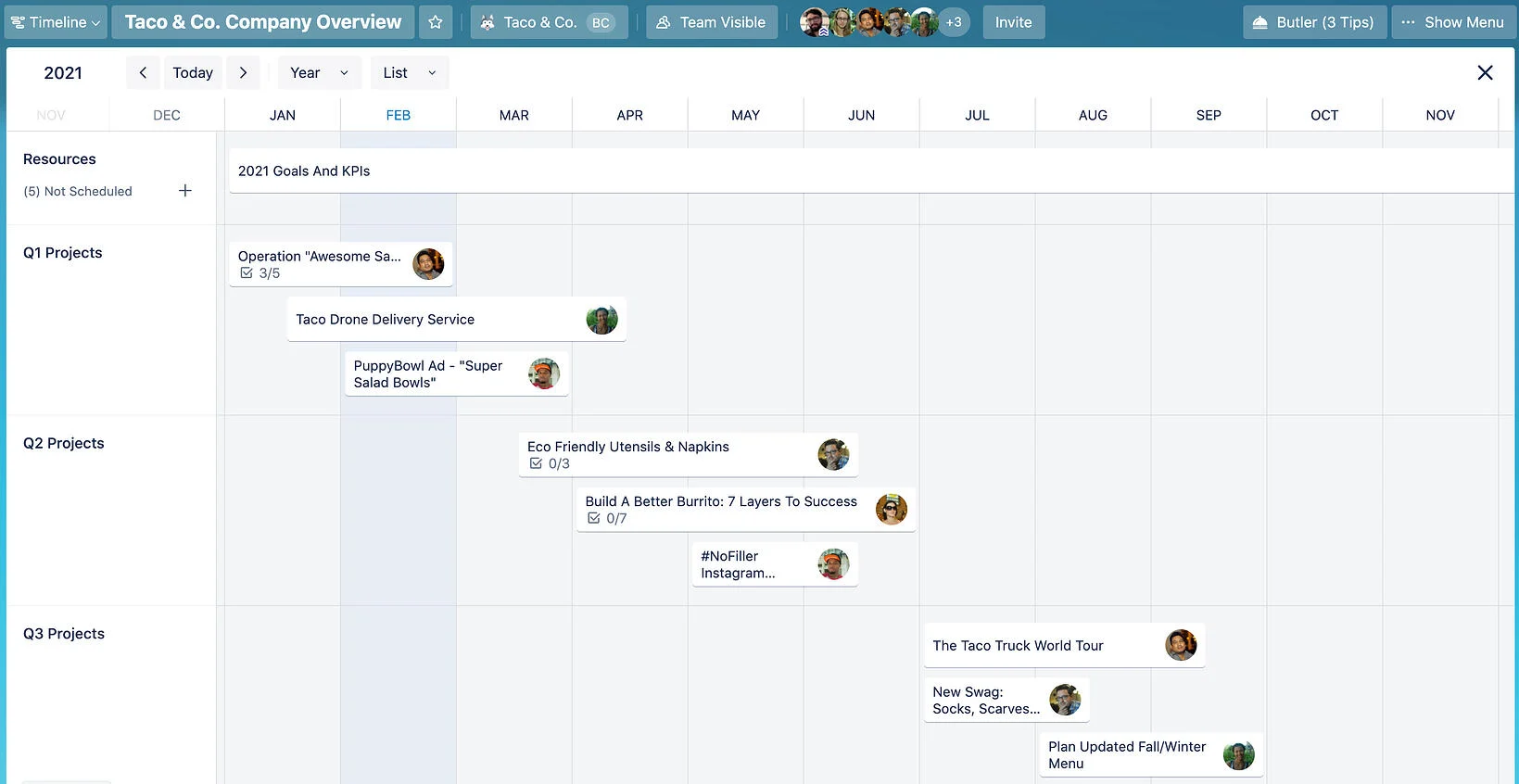
Visualize Your Team’s Priorities: Labels And Card Covers
Color-coding and adding images—or adding visual cues—to your tasks is a simple, yet effective way to clearly organize and track priorities and tasks. Organizing with color and images is a great way to see the whole picture fast.
How It Works
By simply adding a green, orange, or red label to your tasks in Trello cards, you’ve just clearly prioritized each task as low, medium, or high. You can also filter and search for all tasks that are marked as high priority and assign them right away. Using images and color-coding are great visual cues that will help your team see which tasks need to get done, in what priority, and where they are in the development workflow.
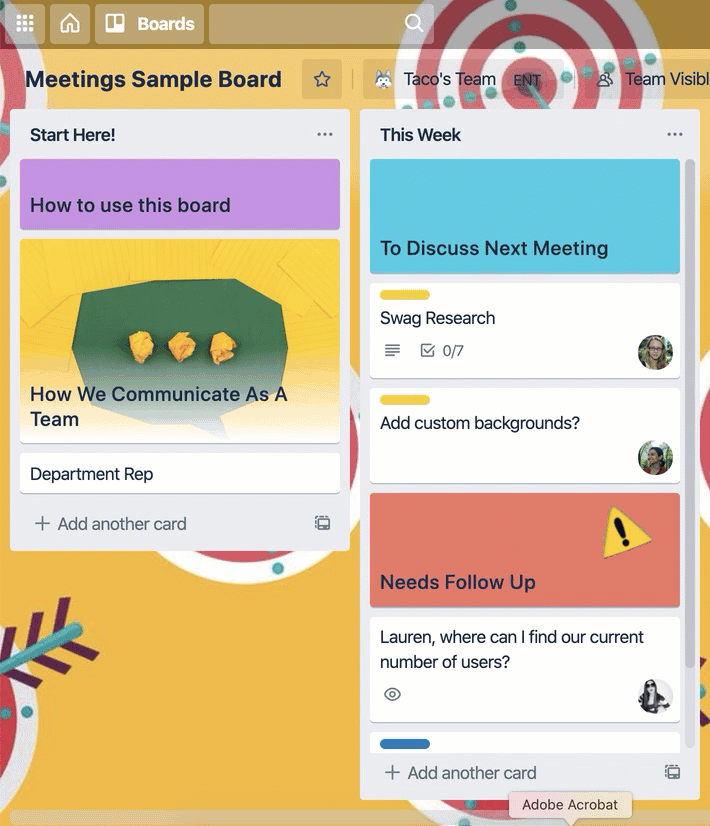
Engineers Working Smarter, Not Harder
Rather than have your engineers sift through ever-changing tasks lists and priorities, let them do what they do best.
Trello was designed to help teams collaborate more effectively and efficiently together. This is what Trello does best. By adding a few simple templates, features, and Power-Ups to your shared Trello Workspaces, you can give your engineering team—and yourself—the tools to be agile and open collaborators.
